
British Airways value chain analysis involves the adoption of a systematic approach in the analysis of competitive advantage. The framework makes a distinction between primary and support business activities identifies the sources of competitive advantage for each activity. The figure below illustrates the essence of value chain analysis. Primary Activities Inbound logistics British Airways inbound logistics operations are complex and involve the timely delivery of fleet of planes, catering products and a wide range of other on-board products. The necessity to ensure the freshness of foods and drinks served during the flights further complicates British Airways inbound logistics primary activities. Competitive advantage is achieved in inbound logistics stage of the business by British Airways through establishing on-going relationships with suppliers, sophisticated system for stock control and professional training that has been accredited by UK City and Guilds. Operations Generally, operations stage of the business involves preparing goods and services to be sold to customers. As the UK’s largest international scheduled airline, British Airways flies globally to more than 400 destinations. Therefore, the scope of its business operations is extensive. British Airways has a range of competitive advantages in operations part of the business through offering its customers increased security for their luggage, offering quick check-in services and also offering some services such as ticket bookings and online booking of other services. Moreover, a high level of customization of service provision and an extensive utilization of digital technologies in a wide range of business processes represent solid sources for additional value for British Airways. Outbound logistics Outbound logistics involves sending ready products to customers for consumption. Although outbound logistics mainly relate to manufacturing companies, it is also applicable towards service businesses such as airlines. British Airways flies to airports in nearly 80 countries worldwide. The airline derives value in outbound…

British Airways segmentation, targeting and positioning refer to ways in which the airline company identifies certain individuals among the general public to offer their service packages. Segmentation involves dividing population into groups according to certain characteristics, whereas targeting implies choosing specific groups identified as a result of segmentation to sell products. Positioning refers to the selection of the marketing mix the most suitable for the target customer segment. British Airways follows multi-segment concentration marketing strategy by offering four different service packages to different customer segments. Specifically, British Airways targets different customer segments for its four levels of services: economy, premium economy, executive and first class. The following table illustrates segmentation, targeting and positioning of each category of British Airways services: Segmentation bases Target segment Economy class Premium Economy Executive Club First Class Geographic Region Domestic flights in UK Europe and international flights Selected international flights Europe and international flights Selected international flights Density Urban & rural Urban & rural Urban Urban Demographic Age Kids, teenagers, middle-aged, old-aged Teenagers, middle-aged Middle-aged, old-aged Middle-aged, old-aged Gender Male, female Income Low Middle High High Occupation Students, salaried Students, salaried Businessmen Professionals Businessmen Professionals Education High school Bachelor’s Technical Bachelor’s Master’s Business schools Master’s Business schools Social status Low, middle Low, middle High High Family size Joint families Nuclear families Nuclear families Newly married Psychographic Lifestyle Moderate-orientated Moderate-orientated Achievement-oriented Achievement-oriented Personality Easygoing Easygoing Determined Ambitious Behavioural Occasions Regular travel Vacations Business trips Honeymoon Business trips Benefits sought Affordability Value Luxury Convenience Luxury User status Regular traveller Regular traveller First timer, Regular traveller First timer, Regular traveller Attitude Indifferent Indifferent positive Positive enthusiastic Enthusiastic Travel and tourism industry base Customer expectations Low Medium High High Customer image Neutral Neutral to positive Positive…
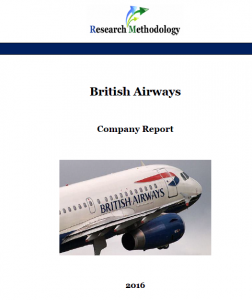
British Airways (BA) is the largest airline company in the UK and it flies globally to more than 400 destinations to airports in nearly 80 countries. British Airways is a part of International Airline Group (IAG) that also owns three other airline brands – Aer Lingus, Iberia and Vueling. The Group also owns 13.55 per cent of the equity of IB OpCo Holding S.L. (“Iberia”) and 86.26 per cent of the equity of Avios Group (AGL) Limited (“AGL”). IAG made a record profit of GBP 1,264 million in 2015. By the end of 2015, British Airways had 39,304 employees globally (Annual Report, 2015). British Airways pursues service differentiation business strategy and differentiates its services via an extensive reliance on digitalization and information technology and high level of customization of service provision. These points represent solid sources of British Airways’ competitive advantage. Major weaknesses related to British Airways include an overdependence on the UK market and low profitability of business operations. At the same time, the airline is presented with the opportunities of forming strategic cooperation with other businesses in airline and catering industries, further engaging in international market expansion and benefiting from synergy via closer integration between IAG’s operating airlines. British Airways Report contains the application of the major analytical strategic frameworks in business studies such as SWOT, PESTEL, Porter’s Five Forces, Value Chain analysis and McKinsey 7S Model on British Airways. Moreover, the report contains analyses of British Airways’ business strategy, leadership and organizational structure and its marketing strategy. The report also discusses the issues of corporate social responsibility. 1. Introduction 2. Business Strategy 3. Leadership 4. Organizational Structure 5. SWOT Analysis 5.1 Strengths 5.2 Weaknesses 5.3 Opportunities 5.4 Threats 6. PESTEL Analysis 6.1 Political Factors 6.2 Economic Factors 6.3 Social Factors 6.4 Technological Factors 6.5 Environmental Factors 6.6…
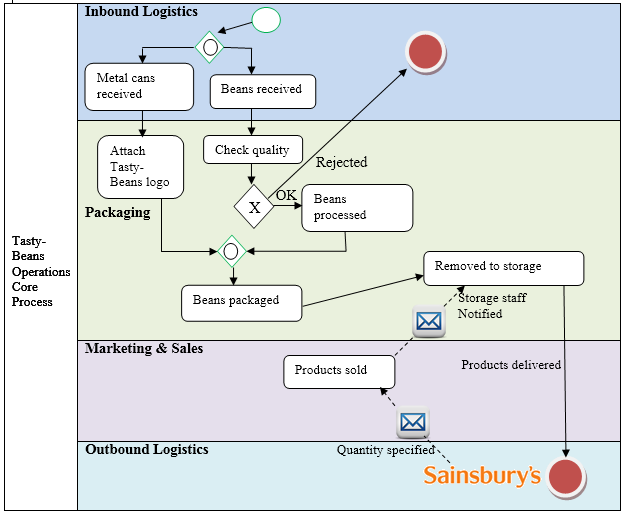
Introduction This article explains core process mapping that directly contribute to the production of Tasty-Beans brand of canned beans owned by Tasty-Beans Co. by to be delivered to Sainsbury’s Plc distribution centres, one of the largest supermarket chains in UK. Moreover, the paper contains in-depth illustration of lower-level mapping that focuses on packaging element of core business processes. Core business processes of Tasty-Beans Co. in general, and packaging element are explained in this paper with the application of ‘Four V’s’ and IGOE frameworks. Tasty-Beans Operations Core Process Mapping Business process can be defined as “well-understood interplay of activities that targets a certain business objective” (Draheim, 2010, p.75). Accordingly, for the case of Tasty-Beans, business process relates to the process of manufacturing and selling canned beans for the purposes of profit maximisation. Business processes can be divided into two categories: core and support. Core processes related to the production of products and services in direct manner, and they include operations, inbound and outbound logistics, and marketing and sales (Burlton, 2001). Support processes, on the other hand, “do not add value, but are necessary to assure that the core processes continue to function” (Harmon, 2007, p.86), and support processes include human resources development, development of technology, procurement and overall infrastructure. BPNM stands for Business Processes Modelling Notation and it assists with finding and utilising possibilities for increasing the levels of effectiveness of various business processes. Mapping of Tasty-Beans Co. canned been manufacturing operations provided below only comprise core processes: Analysis of Sub-Section Process: Packaging Illustration of Mapping of Tasty-Beans Co. canned been manufacturing operations provided above captures main activities within core elements of operations in general manner. Each of lanes within the pool such as inbound logistics, packaging, marketing and sales and outbound logistics can be further expanded in a lower level map in order to…

Introduction The 21st century has been dubbed as an information age (Bell and Blanchfower, 2011) and internet in general, and social media in particular are playing an instrumental role in facilitating the spread of information throughout the globe at a rapid speed. Moreover, increasing levels of interactivity of social media platforms is further contributing to the level of their popularity, and nowadays social media has been effectively adopted by many businesses along a wide range of industries as a highly effective marketing and communication platform. At the same time, the level of use of social media varies between various industries, as well as, individual organisations within a particular industry, and while some organisations are beginning to realise substantial opportunities offered by social media, others are already utilising these opportunities to a full extent. This essay contains a critical evaluation of the influence of social media on the popularity of a tourism destination. The essay starts with discussions about increasing influence of social media on consumer behaviour. This is followed by critical analyses of potential benefits of social media to hospitality organisations. Moreover, issues related to negative impacts of social media on the performance of hospitality organisations are also addressed in this essay. Essay is concluded by providing a set of recommendations to strategic and marketing managers of hospitality organisations in terms of benefiting from opportunities offered by social media to a maximum extent. займ онлайн 19 лет Increasing influence of social media on consumer behaviour in service sector Social media can be defined as “websites and applications that enable users to create and share or to participate in social networking” (Oxford Dictionaries, 2013) and social media has had immense impact on personal and professional lives of many people around the globe at various levels. Types of social media include personal and corporate blogs,…
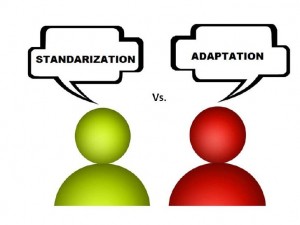
Introduction Modern businesses are granted with vast opportunities in terms of revenue maximisation through entering new markets. Implementation of international market expansion strategy involves strategic-level decision making in relation to global branding strategies, the choice of market entry strategies such as wholly-owned subsidiaries, exporting, licensing, or forming joint-ventures, as well as, deciding on the level of standardisation or adaptation of products and service in new markets. Market entry strategies, branding strategies and the levels of standardisation or adaptation of each single element of marketing mix can be rightly specified as critical success factors directly impacting the success of business in the new market. This essay represents a critical analysis of standardisation vs. adaptation in international marketing in the twenty first century. The essay starts with discussing advantages and disadvantages of standardisation. This is followed by critical analysis of adaptation strategy as an effective customer-orientation strategy by referring to relevant real-life business case studies. The essay is completed by drawing conclusions on standardisation vs. adaptation debate and its relevance to the modern marketplace. Standardisation as a cost saving strategy Standardisation involves using “the same range of products, the same pricing, promotional and location strategies” (Gupta and Randhawa, 2008, p.77). Rationale behind standardisation practices relate to homogenisation of consumer wants and needs due to intensifying forces of globalisation (Winer, 2009). Standardisation can focus on core competitive advantage of the brand and it “allows for a consistent and strong brand to be developed across all markets” (Donelly, 2009, p.150). A Conceptual Model of International Marketing Strategy in relation to standardisation vs. adaptation has been introduced by Theodosiou and Leonidou (2003). According to the model, the degree of standardisation or adaptation is impacted by antecedent factors which have external and internal characteristics. External characteristics of antecedent factors consist of environmental factors, market characteristics, customer issues,…

1. Introduction The level of competition in the global marketplace has become highly intensive and this fact is resulting in mergers and acquisitions between companies across countries and continents. There is no dispute that “mergers and acquisitions are a vital part of any healthy economy and importantly, the primary way that companies are able to provide returns to owners and investors” (Sherman and Hart, 2006, p. 1). However, in reality a range of issues may arise in mergers caused by cross-cultural differences, differences in management style, clash of personalities within senior level management and other reasons. This report attempts to analyse issues associated with Alcatel-Lucent merger failure. The report contains analysis of factors that enabled the merger to take place and the analysis of performance of company in present. Moreover, discussions are provided about cross-cultural issues at Alcatel-Lucent and new challenges for the company in an international area are described. 2. Factors that Allowed Merger in 2006 There were previous negotiation talks between Alcatel and Lucent in 2001 regarding the merger of the two companies. However, negotiations had failed due to suspicions of Lucent management that Alcatel was approaching the proposal like a takeover of Lucent, rather than ‘merger of equals’. The concept of “merger of equals” has been described as “a merger framework usually applied whenever the merger participants are comparable in size, competitive position, profitability, and market capitalisation” (DePamphilis, 2009, p.18). However, some circumstances have changed by 2006 that resulted in renewed merger talks between Alcatel and Lucent. First, the level of competition in mobile telecommunication and internet industry has intensified and the two companies needed to merge in order to be able to compete with Chinese manufacturers and other industry leaders. Second, as a result of numerous negotiations between the two companies on top level Lucent senior…
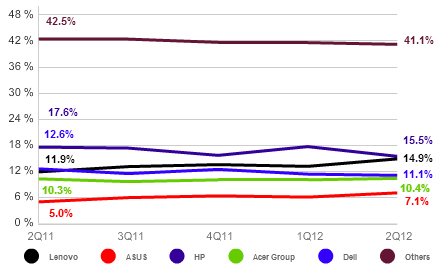
1. Introduction Rapid and dramatic changes in consumer technology market in the global scale are compromising the effectiveness of competitive advantage for many players in the marketplace. Hewlett-Packard Company (HP) can be specified as one of the giants in the industry and the company is finding difficult to address modern challenges in its market in an effective manner. HP is experiencing loss of sales and profitability due to a combination of certain factors discussed in this paper. Behind the overall 7% sales decline in the third quarter of 2012 lay 25% decline of sales of PCs and 15% decline of consumer printers (Walters, 2012). The public acknowledgement of the issue of declining profitability and pessimistic sales growth forecast made by HP President and CEO Ms. Meg Whitman on October 3, 2012 has caused the fall of HP share prices by 11% on the same day. Moreover, according to estimations of a global research agency, Millward Brown (2012), HP brand value has declined 35% in 2012 compared to 2011, and the company has moved down from 18th place to 26th in the list of Top 100 Most Valuable Global Brands within the same period. This article represents a critical analysis of declining profitability of HP using an analytical method. The article starts with introducing HP corporate profile and relevant background information. This is followed by a critical analysis of major factors contributing to the loss of profitability at HP. Namely, factors discussed in a detailed manner include increasing popularity of computer tablets, economic uncertainties in Europe, and leadership challenges. Moreover, this article proposes recommendations for HP senior level management in dealing with its current problem of declining profitability and contributing to long-term growth of the company. 2. HP: Corporate Profile Founded in 1939 by W.R. Hewlett and D. Packard, HP has been…
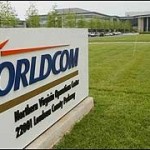
1. Introduction Once the largest provider of internet-based communication services and the second largest long-distance telephone company in the US, WorldCom became one of the most popular case studies for corporate ethics, financial frauds and senior management irresponsibility along with Enron. This article contains analysis of the fall of WorldCom employing four-stage fundamental analysis. The article starts with discussions of business strategy in general and analysis of strategies that exposed WorldCom to major risks in particular. This is followed by analysis of analysis of accounting practices used at WorldCom. Moreover, the article contains discussions devoted to financial analysis and the role of auditors in relation to WorldCom case study, as well as, prospective analysis that addresses valuation models employed by WorldCom accountants. This article is completed by reflecting upon important lessons to be gained from this particular case study for international business practices. 2. Business Strategy Analysis: Strategies and Practices that Exposed WorldCom to Major Risks Business strategy analysis is the first stage of the four-stage fundamental analysis of the business entity. Business strategy analysis associated with in-depth study of effectiveness and sustainability of competitive advantage of the company. Business strategy is a broad topic with multiple facets with varying levels of impacts on firms’ competitiveness and long-term growth. займ на карту мгновенно круглосуточно без отказа According to the framework of Porter’s Generic strategies (1985) businesses can base their competitive advantage on differentiating products and services or offering products and services for competitive prices. Importantly, the choice between is faced by overall businesses entity, as well as, separate segments within the entity. Primarily, WorldCom’s business strategy was most related to cost advantage, offering discount long-distance telephone services, according to the former name of the company Long Distance Discount Services Inc. (LDDS). However, as the company entered the phase of massive expansion…

Introduction Described as the greatest geopolitical catastrophe of the 20th century by the current president of Russia Vladimir Putin (BBC, 2005, online), the collapse of the Soviet Union has caused profound changes in global political and economic affairs, impacting the lives of hundreds of millions of people. Union of Soviet Socialist Republics (USSR) has been formed in 1922 and it has enjoyed the culmination of its influence in the global scale following its victory in World War Two within the period from mid 1960s to mid 1980s being able to send the first man to the outer space in 1961 and achieving relative stability in the standard of life of member state citizens. Initially, Soviet Union comprised only six member states in 1922 – Russian, Ukrainian, Byelorussian, Azerbaijan, Georgian and Armenian Soviet Socialist Republics; however its size has been gradually increased during the following two decades until 1941 to reach the numbers of member states to 15 through expanding into Central Asia and Balkan states. Nevertheless, due to the range of reasons discussed below the existence of USSR came to its end officially in 1991. Although more than two decades have passed since the collapse of the USSR this topic is regularly explored in academic levels due to its importance and impact to the formation of present geo-political situation. This essay attempts to analyse the major reasons and implications of the collapse of the Soviet Union. Economic, cultural, social and political factors contributing to the collapse of the Soviet Union are discussed in this essay and implications of this event on regional level for former USSR blog countries, as well as, on the global landscape are assessed. Economic factors contributing to the collapse of the Soviet Union Assessment of economic factors that led to the collapse of the Soviet Union…
